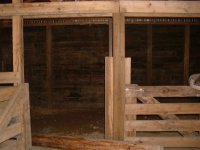All excellent advice here. Wished I had found this discussion earlier instead of having to search and ask around for a lot of advice and sounding dumb. The only thing I have to contribute is that I would definitely go with landscape timbers over railroad ties. I think after looking at the wall for a few years, you will probably regret using railroad ties and I think the pressure-treating process is a little kinder type of leaching over cresote. As to integrity and resistance to decay and weakening of timbers, I think there is a slight difference among the pressure treating process used in manufacturing. Seems in my area at least, most timber (and other lumber materials) that come from a lumber and building company seems to be of better quality than the mass market places like Home Depot or Lowes. just an opinion here.
I have built 4 of these type walls, one 5 feet, two 3 feet, and one 4 feet. I believe anytime you go over 4 feet, you need a permit, but in my area it's very slack on permits for outside projects. Just make sure you use dead men in staggered rows for every 3 feet, for example if you go four feet, the one row of dead men will be fine, but if you go over 4 i would advise another row with longer angled dead mean staggered. Most of time if you go over 4 feet, you need professional engineering help.
just some tips......make sure you have a good heavy duty 1/2 drill with Irwin Speedbore auger or spade bits to start your holes for reinforcing rods.
I used a recripicating saw with metal blades to cut desired length of rods
as someone suggested, tie together with 10-12" spikes
ground contact rebar should extend down at least 24"
landscape fabric or burlap placed on top of gravel before backfilling adds years to projects life
a handy little item that helped me in laying out courses is a Sight Level purchased at any hardware store. cost about $10..about 4 inches long and you just look through it until the bubble crosses the line inside. Line level works good too, just not as quickly to use.
a spade that is about 8 inches wide called a landscaper's spade helps with leveling ground for bottom course.
The oldest wall i've built is 7 years old in a very shady and wet area with a red clay bank. Looks just like the day it was built even though i forgot the drain holes or weep holes until two years later.
one note.....if you use a tractor in the project, just make sure when you're using the rear blade for leveling or scraping loose fill down for pre-installation of timbers, that you don't forget to get the darn thing out of the way when you go back and forward! I tore a wall down just by being in too big a hurry.


